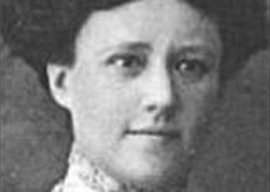
August 11, 2018

Source: Wikimedia Commons
From time to time I would meet the late Professor Michael Shepherd for a drink. He was a most distinguished researcher in the psychiatric field, and he was formidably erudite. He also had a satirical sense of humor, laughing at the world’s absurdity. Once, for example, tired of cliché and meaningless phrases, he put forward the motion at the World Health Assembly that “war is bad for health.”
There were a lot of wars going on at the time, and he knew that his motion—seemingly so innocuous—would cause uproar. It did. The delegates of each country engaged in war insisted that its war was good for health, if not immediately, then ultimately, for it was fighting for nothing less than peace and justice, which, as is obvious, are the preconditions of health.
On the last occasion that I met him before his sudden death, he laughed at the pedantic absurdities of modern academe. As an instance he gave a recently published book about the life of Hermine Hug-Hellmuth, a figure entirely forgotten (this was in the days when the book had not yet lost its prestige in our cultural economy). Hug-Hellmuth was an early psychoanalyst who left almost no trace in history, even with Freud’s gnostic sect. She was revived, Professor Shepherd suggested, because academics have to study and publish something new, however worthless. He laughed.
Subsequently I bought the book on her (Hermine Hug-Hellmuth: Her Life and Work, by George Maclean and Ulrich Rappen), thinking that it might one day be a curiosity. I did not ready any of it until much later. Gradually my laughter or levity gave way to sorrow. Her story was a tragic one, though not without a bitterly comic element.
The book contains both a short biography and a translation of some of her writings. The biographical section begins:
Who was Hermine Hug-Hellmuth? What did she do?
This is an inauspicious beginning because one usually reads a biography with some slight prior notion of or interest in its subject. The first paragraph continues:
When we developed our initial curiosity and began our project, no one knew much about her. People were even confused about her name.
So far, at least, Professor Shepherd’s amusement seemed justified.
The biography was very short, because indeed little was known of her. Most of us exit the world leaving little trace, and this is even more so with someone born in 1871 and dying in 1924.
Hug-Hellmuth was born into minor Viennese aristocracy, her mother dying when she was 12 and her father losing most of his inheritance. He died when she was 27. He had, however, managed to pay for her education, and she was one of the first women students at Vienna University, graduating with a doctorate in physics. Clearly, she was a person of high intelligence and force of character.
Her interest in psychoanalysis was aroused by a family doctor, and she was accepted into the psychoanalytic circle, only the third woman to be thus accepted. For the rest of her life she remained sycophantically respectful of and grateful to Freud, which meant that, being the kind of man that he was, she remained in his good books. This was not the case with Freud’s daughter, Anna, who could not forgive her for having been the first to apply psychoanalysis to children, which is how she, Anna, wanted to be known. Pettiness and spite have always been the hallmarks of psychoanalysis, despite its claims to wisdom.
Hug-Hellmuth had an illegitimate elder half-sister, Antoine, who in 1906 gave birth to an illegitimate son called Rudolf. This was to prove not unimportant in Hermine Hug-Hellmuth’s life, for in 1924, Rudolf murdered her brutally, shortly after the publication of her book, New Ways of Understanding Youth. It is hard to suppress a smile at the irony of it.
Rudolf at the time was trying to rob her, having broken into her flat. She started to scream, and he strangled her. Antoine, his mother, had died of tuberculosis in 1915, but Hermine had not been much of a substitute mother and indeed seemed to feel no affection for him at all; rather, hostility. He early displayed antisocial tendencies such as lying and stealing, and she used him as the subject of some of her psychoanalytical writings. He was sent to prison after killing her and was released early, being then referred for treatment to the psychoanalyst Helene Deutsch, who declined to see him. He began to follow her around until chased off, after which all historical sight of him is lost. Not much of a success story for psychoanalysis.